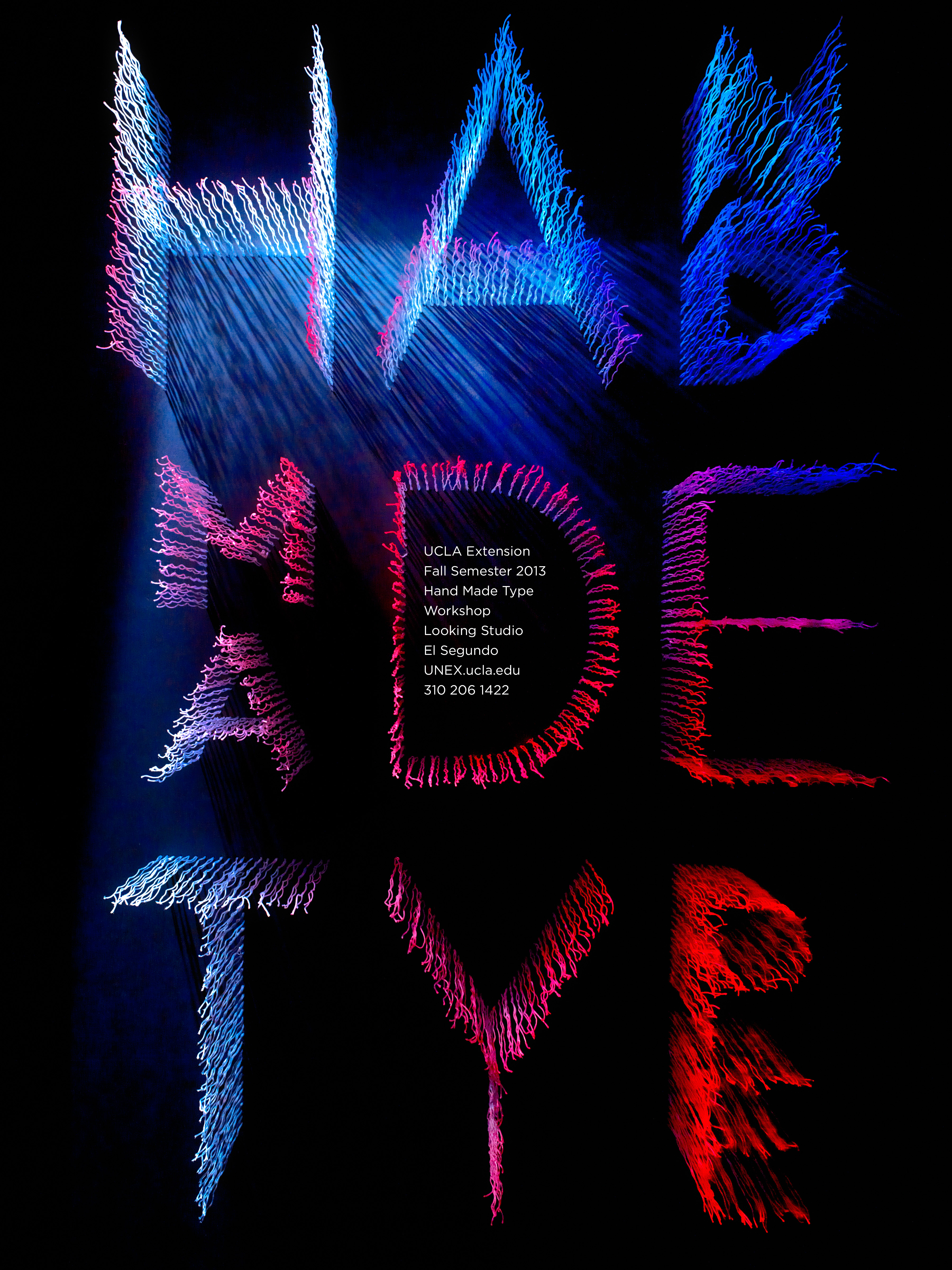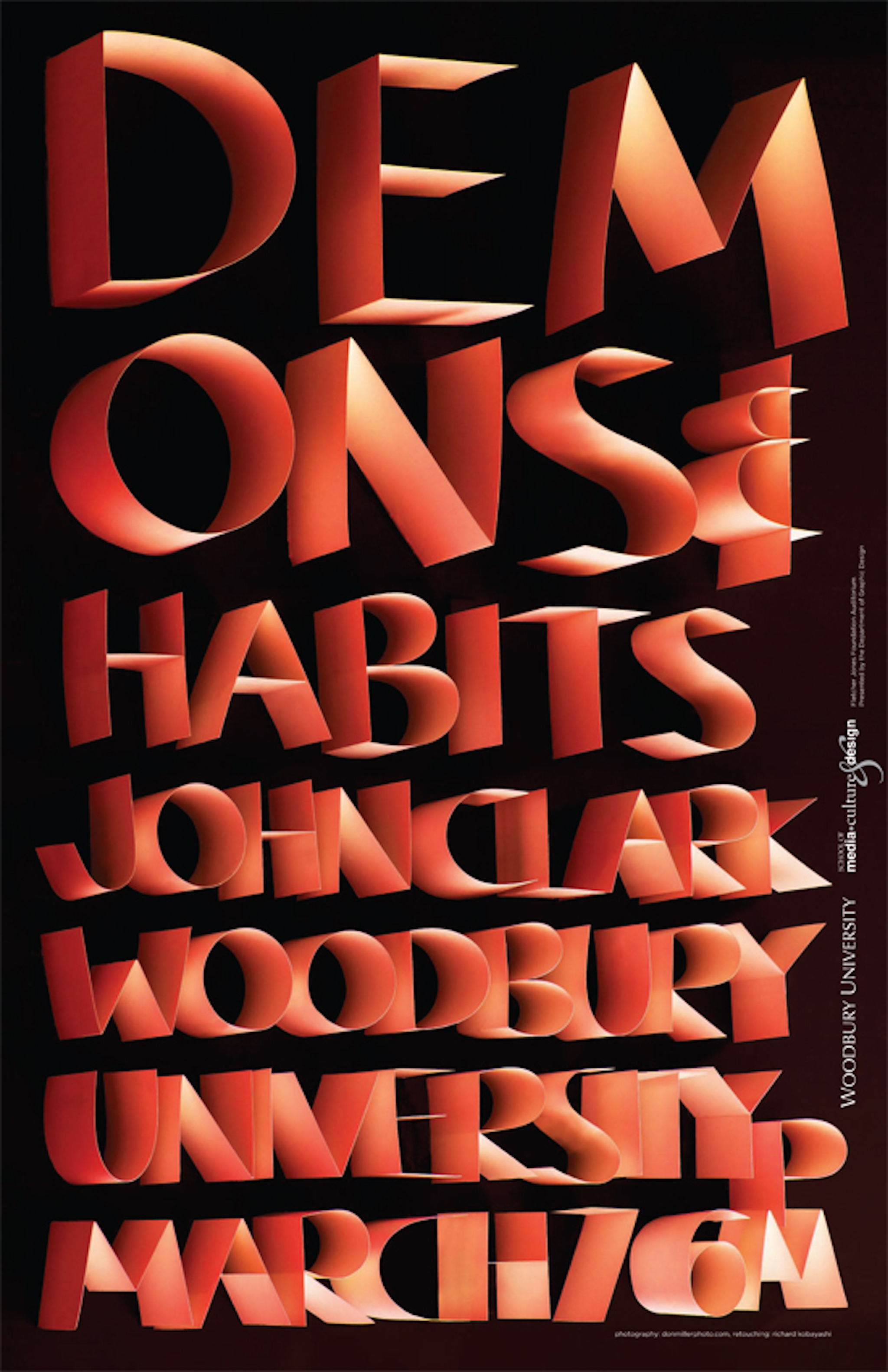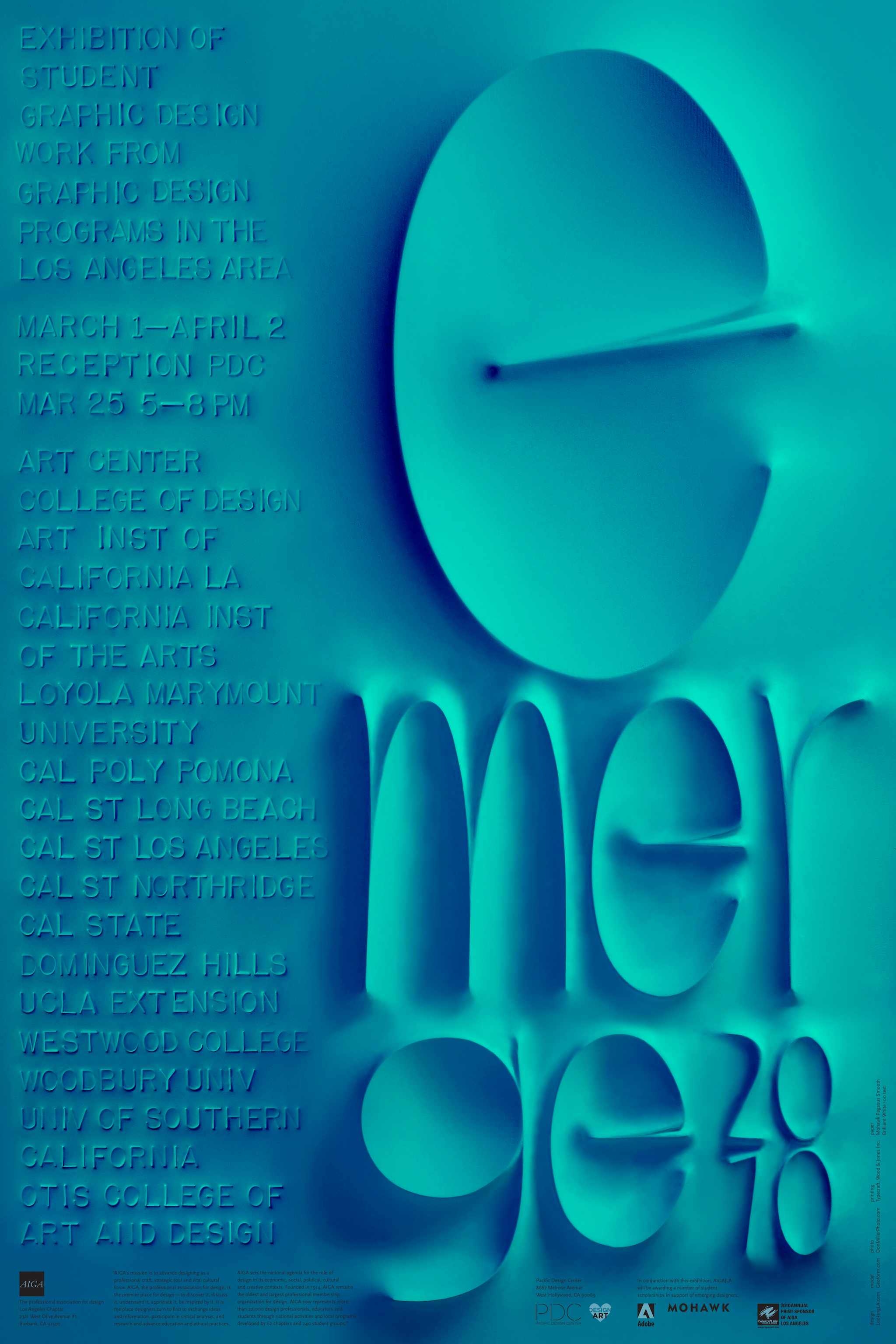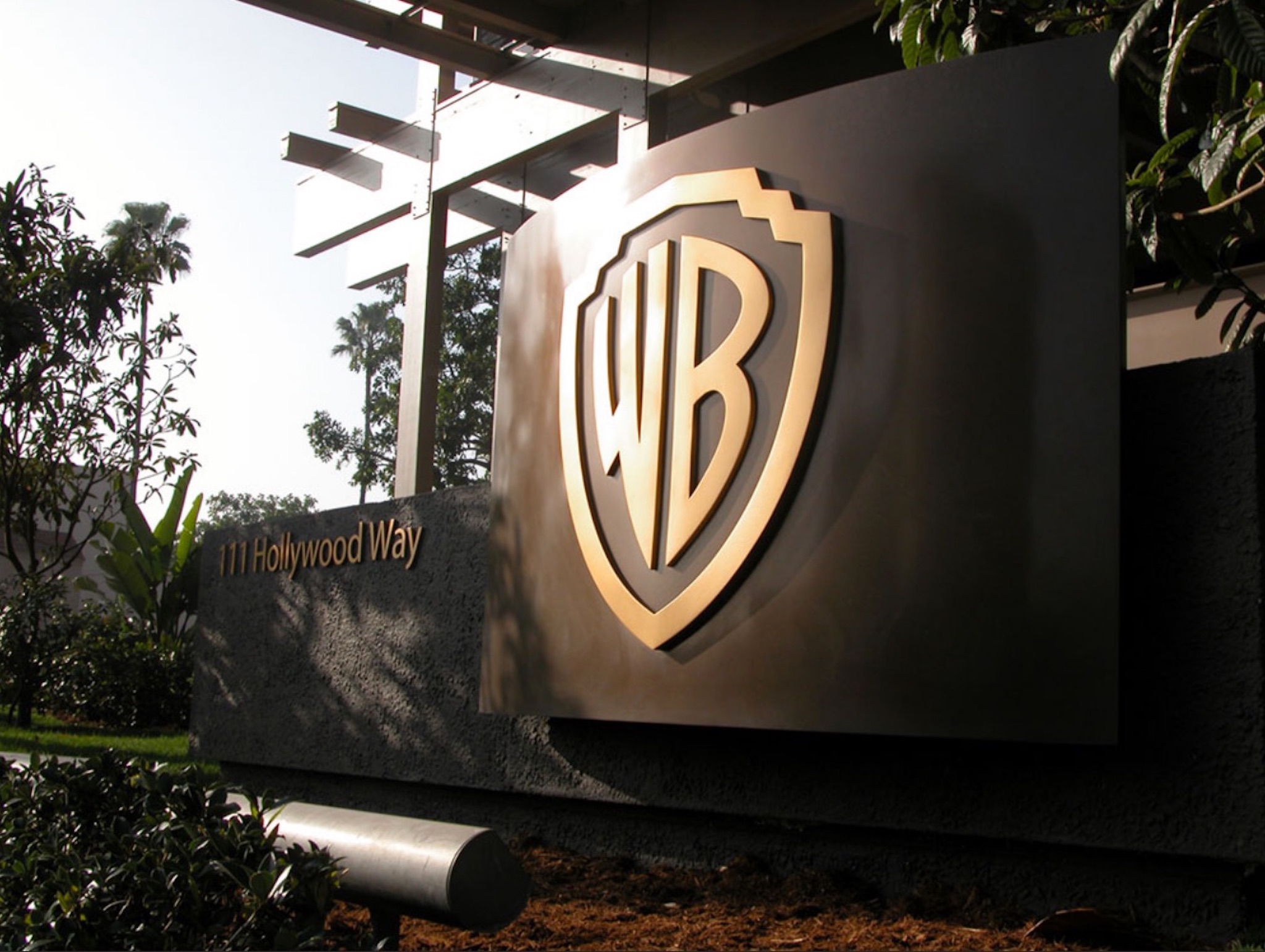TDC celebrates its talented and diverse membership by featuring a monthly member profile. John Clark is the creative director of Looking, a Los Angeles-based branding agency specializing in built environments and conceptually driven graphic design. TDC asked John to talk about about his trajectory in the design field —from his studies in Basel, his growth by working with the greats, and the unique capabilities of the Looking studio.
How did you start out?
My undergraduate work at Syracuse began in industrial design and moved into the new discipline of environmental design, but the university curriculum was not sufficiently studio-weighted to prepare one for a career in the design profession.
After graduation, I was blessed to get an internship with Sasaki Walker in Sausalito, California. After several years, I joined with Rich Burns and Doug Akagi to start The GNU Group and although this went very well, I still didn’t have the education for serious professional pursuit.
In 1977, I went to Basel, which was more than ten years prior to the advent of desktop computing at the time that Wolfgang Weingart was at the peak of his professional and teaching activity. Weingart was creating his innovative posters, all assembled as film positive collages, prior to the convenience of color proofing. He and the other great instructors at Basel worked hard to demonstrate how to develop an entirely original and proprietary visual language.
While in Basel, I learned about Rolf Müller. Not well known outside of Germany, Rolf was a brilliant strategist and designer, who excelled in the competitive design environment at the time. Rolf directed most of the design of the 1972 Munich Summer Olympic Games, and had just been written up for his work on the Sarajevo winter games. Although Rolf really didn’t need an American in an all-German design studio, I wanted to the position more than he didn’t want me, so I got the job. It was certainly the greatest learning experience in my life.
Coincidentally, Rolf was then President of AGI and was hosting the annual meeting in Munich. Along with Saul Bass, Jim Cross walked in one day. Jim was being featured in the first issue of Rolf’s magazine HQ (High Quality), published by Heidelberg Press, and we met briefly.
Once back in the States, I opened a Houston office for my original firm, The GNU Group. In a few years, bored with the opportunities in Houston, I wrote to Jim, who invited me to join his firm, Cross Associates. In 1990, after much discussion, Saatchi & Saatchi purchased Cross Associates through Siegel+Gale.
At this time, the AIGA chapters were also starting with the Los Angeles Chapter being the first. Once underway, April Greiman became its president and I became very involved. The chapters supported greater local activities and regular national retreats. I first met Steven Heller at one of the first retreats, when he was still a shy guy well before his national fame. Milton was also a great presence at those early meetings.
In 1992, Looking started and I have been here ever since.
Throughout all of this, design education has remained an important activity for me. After many years teaching and a few years as a design chair, I have found that weekend workshops are a most rewarding design education activity. Promoting these events has allowed me to push myself with typographic posters, employing ever more unexpected media.
We regularly work with paper, glass, metals, and other physical materials in search of a unique voice. Our studio has the space to work with ten students and sometimes with their mentors over an intense two-day, weekend. We have our own shop facilities and a nearby photo studio to support a start-to-finish, two-day workshop.
 Poster for Hand Made Type Workshop at Looking Studio for UCLA, 2013.
Poster for Hand Made Type Workshop at Looking Studio for UCLA, 2013.
You’ve been doing this awhile. Do you notice a difference in how work is approached, evaluated, or criticized now versus earlier in your career?
Previously, design was largely a communication and compositional undertaking. Now, with a far broader design mandate, the performance measure is increasingly important, especially when communicating through multiple media. Also, right now there is a preponderance of specialty firms versus general-practice studios.
 Image for an AIGA Los Angeles design presentation held at Woodbury University, 2012.
Image for an AIGA Los Angeles design presentation held at Woodbury University, 2012.
How would you describe the Los Angeles design scene or community? From your experience, what is unique about it?
Los Angeles was relatively dormant from the 1970s until about 2010. The city is currently experiencing a dramatic shift from widespread, two-story sprawl to a more dense, metropolitan community. While it is far from the only one, Los Angeles appears to be the epicenter of the development of creative workspace.
 Poster for Emerge, a student design exhibition hosted by AIGA Los Angeles, 2010.
Poster for Emerge, a student design exhibition hosted by AIGA Los Angeles, 2010.
You mentioned that earlier in your career, Saul Bass would “summon” you into his office. What was his manner and did that inform the way he directed others?
Saul was larger than life. After moving from New York to Los Angeles in the sixties, he essentially created our design community, which was soon fleshed out by Jim Cross, Bob Runyan, Keith Bright, Charles and Raye Eames, Deborah Sussman, Arnold Schwartzman, and Rod Dyer, among others.
In addition, Saul was the only West Coast member of the Aspen Design Conference Board, and he took it upon himself to make sure we all showed up. When Saul called you, telling him no wasn’t an option.
Unlike other designers, Saul lived fully in the two entirely separate worlds of film and graphic design. At his memorable memorial, these two completely different groups met one another.
During the last years of his life, Saul was very involved in the local Los Angeles AIGA community. Board meetings at his office were highly memorable and worth videotaping, as he and Lou Danziger debated design history and shared it with us lucky participants. Although young people found it intimidating to meet him, the later Saul was kind, generous, and patient without exception.
 Looking’s first environmental signage work for Warner Bros, expressing the trademark dimensionally using two proprietary bronze colors.
Looking’s first environmental signage work for Warner Bros, expressing the trademark dimensionally using two proprietary bronze colors.
When you are designing and branding for environmental signage, what is your process?
Our most typical role in branding for architectural spaces starts with project naming, and as it develops, includes the project branding, website, and the initial marketing materials.
A significant portion of our work on a project is three-dimensional, which includes any type of graphic communication on the site and building. Our particular niche is that we develop all design proposals in three-dimensional form, taking advantage of our in-house prototyping shops.
We maintain two full workshops in house — a prototype shop with all tools and laser, which is able to create most things in MDF, wood, aluminum and urethane, and a hot glass shop, which is able to prototype fused, slumped, and cast glass.
All of the traditional fabrication services in southern California support us, including metal shops, welders, foundries of various sorts, and last but not least, the Warner Bros scenic art department. Despite living in a digital age, we can have letters cast in solid bronze, type designs painted onto buildings, and metal type set into terrazzo.
Links:
Website: http://looking.la/#/home
Facebook: @LookingLA